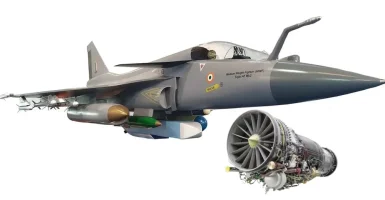- Views: 2K
- Replies: 11

The Indian Air Force's (IAF) next-generation fighter jet, the Tejas Mk2, is moving closer to reality. Sources indicate that the assembly of the first prototype is set to commence soon, with a rollout expected by March 2026.
This updated timeline, confirmed by Aeronautical Development Agency (ADA) officials, signals a positive step forward for the indigenous fighter jet program.
Prabhulla Chandran VK, Director of Avionics and Weapons Systems at ADA, stated that the rollout is anticipated in approximately 18 months, aligning with the original target for the Tejas Mk2's first flight in 2026.
Following the rollout, the prototype will undergo rigorous testing, including taxi trials, systems checks, and ground engine runs, before being cleared for its maiden flight.
The Tejas Mk2 represents a significant upgrade from the existing Tejas Light Combat Aircraft (LCA). This 4.5 generation fighter will boast a more powerful GE-F414 engine, a redesigned fuselage with close-coupled canards for enhanced maneuverability, and an integrated Infra-Red Search and Track System (IRST) for improved situational awareness. These advancements are expected to significantly boost the aircraft's performance and combat capabilities.
This project is a collaborative effort between ADA, HAL, and various other public and private sector entities. While initial reports suggested a possible delay, the confirmed commencement of prototype assembly indicates that the program is now back on track.
The Tejas Mk2 is expected to play a vital role in the IAF's future force structure, complementing other advanced fighters like the Rafale and the upcoming AMCA (Advanced Medium Combat Aircraft). With its enhanced capabilities and indigenous origins, the Tejas Mk2 holds the promise of bolstering India's defence capabilities and its position in the global aerospace industry.



